Halloween In The Victorian Era Through Photos
In the Victorian era, Halloween took on a fresh, more refined identity. Instead of focusing on honoring the dead as in earlier times, it became a fun, social event. With an emphasis on morality and proper behavior, Victorians turned Halloween into a festive evening of elegant gatherings, filled with light-hearted games and surprising themes—most notably, romance.
Curious about how Victorians celebrated this festival and what games they played? Keep scrolling down to learn more.
The popularity of Halloween in Victoria era
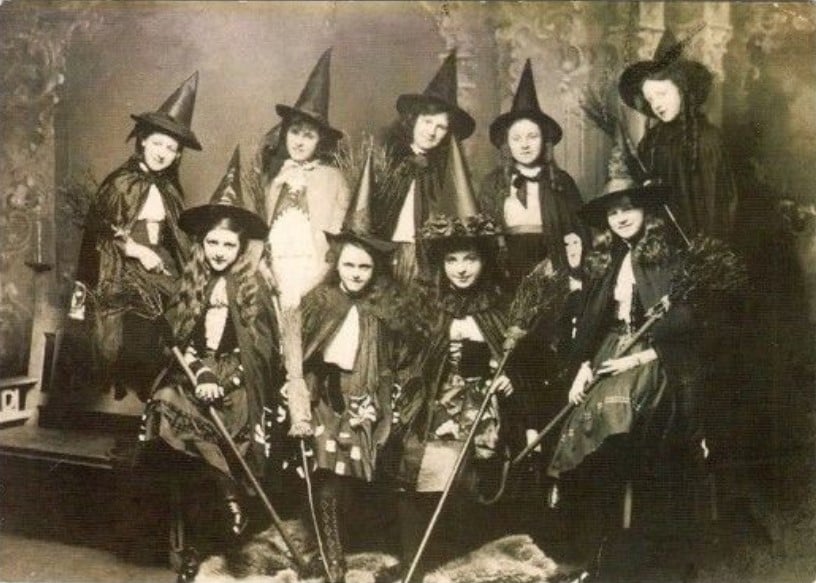
In the 1870s and 1880s, periodicals played a big role in shaping Halloween into a night for fun divination games and social gatherings. Similar to magazines today, publications like Harper’s Weekly, Harper’s Bazaar, and Godey’s Lady’s Book shared gossip, advice, and tips on relationships and homekeeping.
They also entertained the middle-class with stories and poems. Thanks to these magazines, Halloween parties became a popular trend among middle-class families.
By the 1890s, newspapers and magazines were full of ideas for Halloween games, recipes, and decorations. Even party invitations were elaborate—some hosts would leave small jack-o’-lanterns with invitations at their guests’ doors.
Guests would arrive dressed in their best clothes or costumes, as these parties often doubled as matchmaking events.
How Victorians celebrated Halloween
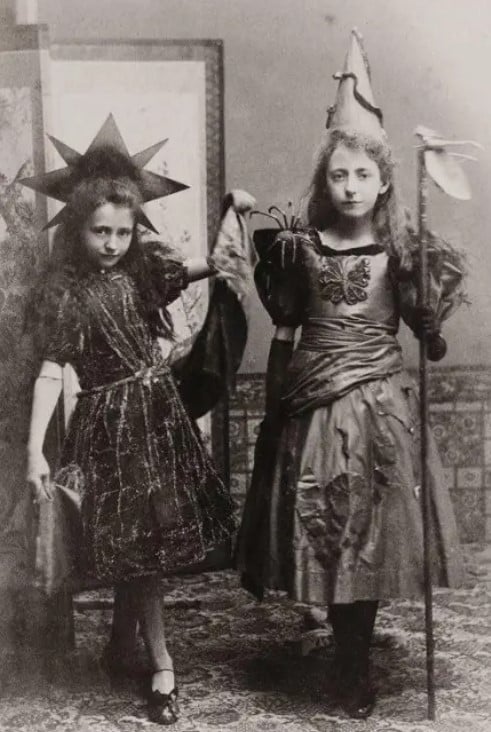
Though often seen as strict and reserved, the Victorians embraced Halloween with surprising excitement – and sometimes even wild abandon. Their Halloween parties were packed with lively games and spooky traditions, many of which continue to be a part of modern celebrations.
It was a time for fun, mystery, and social gatherings that left a lasting influence on how we celebrate the holiday today.
Queen Victoria enjoyed Halloween
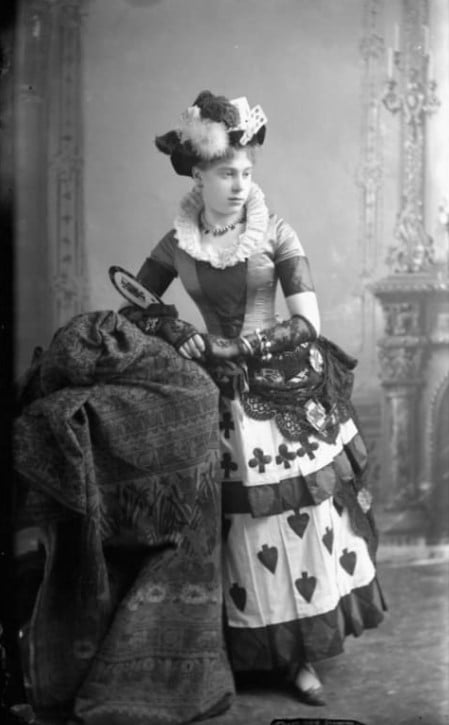
In 1876, Queen Victoria herself hosted a memorable Halloween celebration at Balmoral Castle, alongside Princess Beatrice and the Marchioness of Ely. The event, which included farmers and tenants from nearby areas, had been planned for days. The November 6, 1874 edition of the Staffordshire Sentinel reports:
“Her Majesty and Princess Beatrice, each bearing a large torch, drove out in an open phaeton. A procession, formed of the tenants and servants on the estates, followed. All carried high torches, lighted. They walked through the grounds and round the castle, and the scene as the procession moved onwards was very weird and striking.”
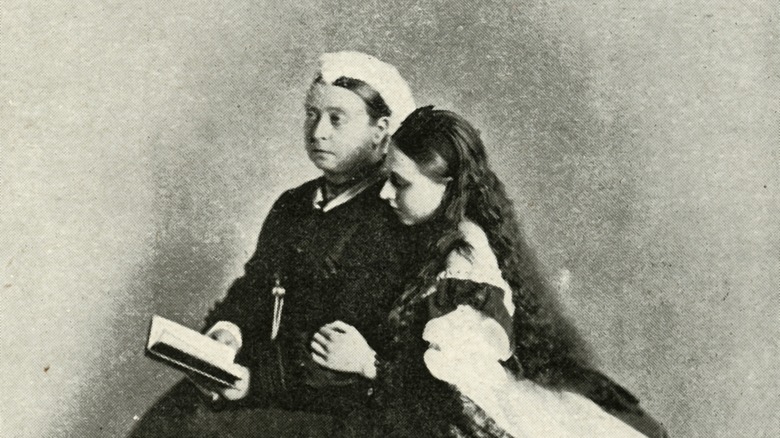
As darkness settled, the festivities kicked off with a large bonfire lit in front of the castle, giving the night an unexpectedly pagan vibe. As the Staffordshire Sentinel writes:
“When the flames were at their brightest a figure dressed as a hobgoblin appeared on the scene, drawing a car surrounded by a number of fairies carrying long spears, the car containing the effigy of a witch. A circle having been formed by the torchbearers, the presiding elf tossed the figure of the witch into the fire, where it was speedily consumed. This act of cremation over, reels began, and were danced with great vigour to the stirring strains of Willie Ross, her Majesty’s piper.”
While a ball had been planned afterward, the lively energy of the crowd kept the celebration outdoors, with the bonfire blazing well into the night.
Ordinary Victorians embraced this festival
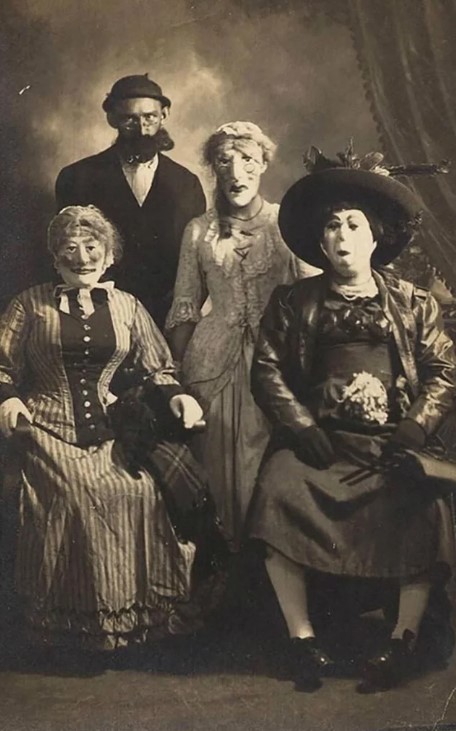
While Queen Victoria’s lavish Halloween celebrations were out of reach for most, those with simpler means found joy in hosting indoor parties filled with games. These gatherings often focused on lighthearted activities, many of which were meant to predict the future—especially when it came to romance.
The idea of finding a future husband became the main theme, overshadowing the spooky Halloween traditions like witches and the supernatural. The night turned into a fun event centered on matchmaking and games.
What games Victorians played in Halloween

Many of the games played during Halloween have roots in pagan traditions or medieval superstitions, while others simply served as a way to enjoy time with friends. 19th-century Halloween parties became a chance to partake in what author Hugh Miller described in his 1876 book, Scenes and Legends of the North of Scotland, as: “….a multitude of wild mischievous games which were tolerated at no other season.”
Melting lead
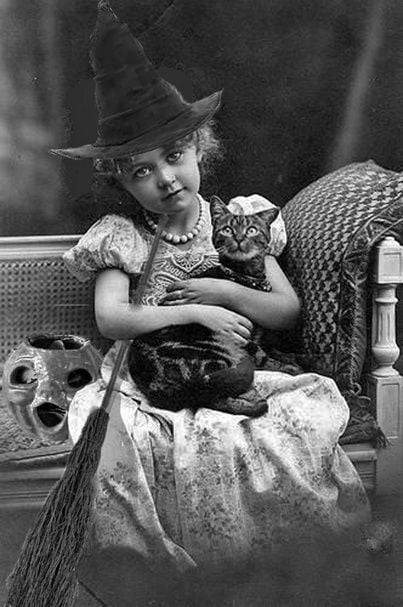
In her 1893 book How to Amuse Yourself and Others, Linda Beard shares some popular Victorian party games that were enjoyed in both England and America. One of the most intriguing games involves melting lead to predict the future occupation of a young woman’s husband. Beard describes the game as follows:
“Each girl, in turn, holds a door-key in one hand, while with the other hand she pours the melted lead, from an iron spoon or ladle, through the handle of the key into a pan of cold water. In the fanciful shapes the lead assumes can be traced resemblances to all sorts of things. Sometimes it is a sword or gun, which indicates that a soldier will win the fair prize; again, traces of a ship may be seen: then the favored one is to be a sailor; a plough suggests a farmer; a book, a professor, or perhaps a minister; and when the lead forms only drops, it seems to mean that the gentle inquirer will not marry, or if she does, her husband will be of no profession.”
Three Luggies
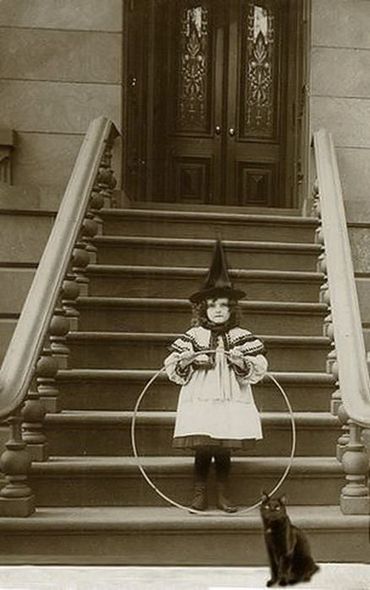
One playful game from the past, called “Three Luggies,” involves three bowls: one filled with clear water, another with milky water, and the last one empty. The bowls are placed on the hearth, and a young lady wishing to play is blindfolded and guided to them. As Beard describes:
“She is then told to put her left hand into one of the bowls. If she dips her fingers in the clear water, she will marry a bachelor; if in the milky water, a widower; and if into the empty bowl, it is a sure sign that she will live in single blessedness all her days. This ceremony must be gone through three times, and the hand be dipped twice in the same bowl, in order to make the prediction of any value.”
There’s a similar version for gentlemen, detailed in the 1832 Book of Days. In this variation, one bowl contains “foul water.” If a gentleman dips his fingers into the clean water, it predicts he will marry a maiden. If he touches the foul water, he’s destined to encounter a widow. And if he finds the empty bowl, it foretells a life of bachelorhood.
Roasting nuts
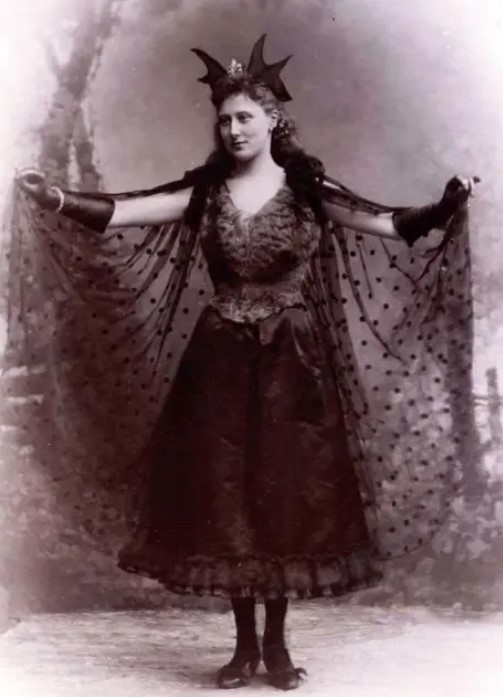
One popular Halloween game involved roasting nuts to test friendships or compatibility. This game, often mentioned in books and articles of the time, required two nuts to be placed side by side on a grate or shovel over the fire. Beard explains:
“If they burn quietly, it is prophetic of a long and happy friendship kept up by both parties; but if in roasting they burst with a loud report and fly apart, they are decidedly uncongenial, and should not seek much intercourse. The movements of the nuts while heating are closely watched, for the tempers of the persons for whom they are named are said to be thus revealed.”
Trying for a Raisin
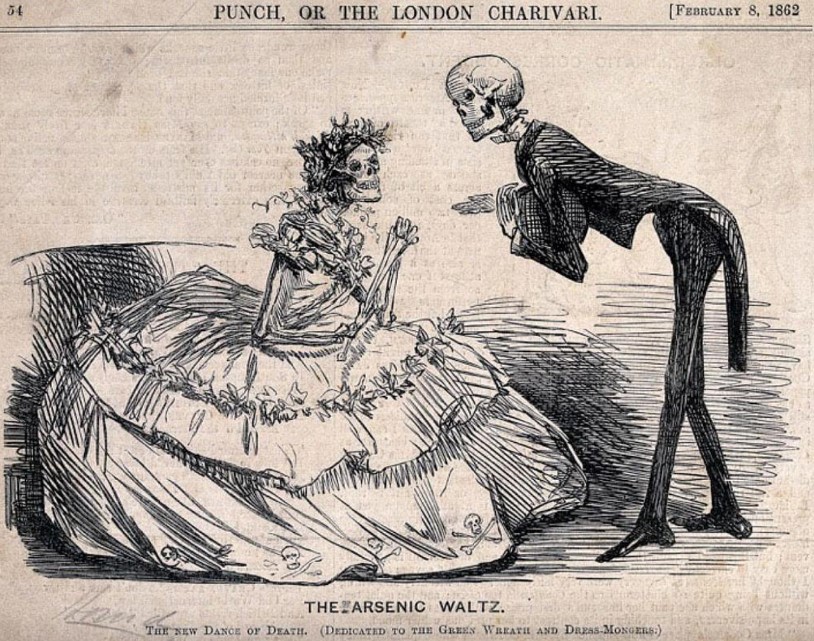
Another fun challenge for gentlemen was “Trying for a Raisin.” In this game, a raisin was tied to the middle of a yard-long cotton string. Two players took one end of the string in their mouths and began chewing, with the first to reach the raisin declared the winner.
Apple and Candle
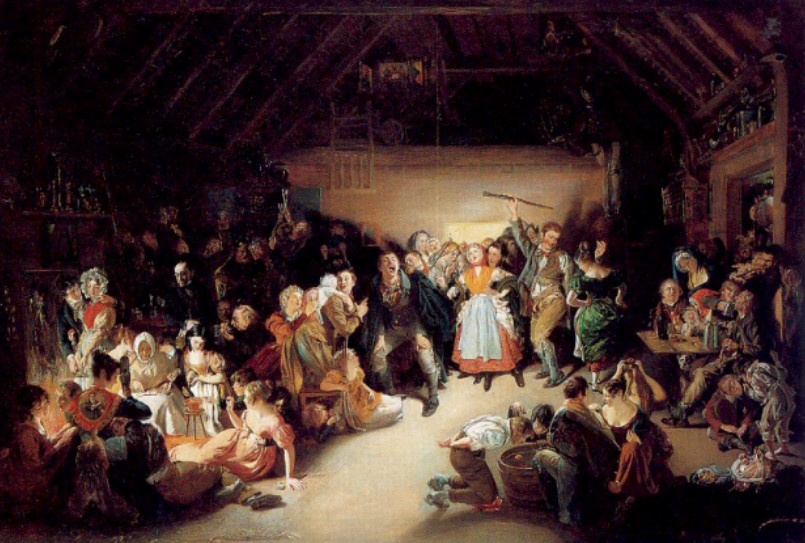
There was also the risky “Apple and Candle” game, where a stick was hung horizontally with a lit candle on one end and an apple on the other. The Book of Days explains:
“The stick being made to twirl rapidly, the merry-makers in succession leap up and snatch at the apple with their teeth (no use of the hands being allowed), but it very frequently happens that the candle comes round before they are aware, and scorches them in the face, or anoints them with grease.”
The Ghostly Fire
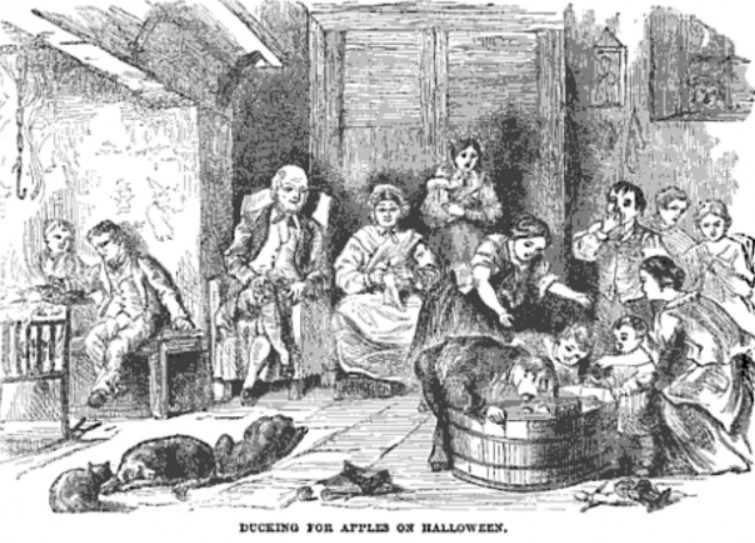
No Halloween party was complete without “The Ghostly Fire.” In this lively game, a mixture of salt and alcohol was placed in a dish with a few raisins and then set ablaze. When the flames reached their peak, partygoers would join hands and dance around the table while the fire burned. Beard writes:
“The dance was not prolonged, for it was our duty, before the fire was spent, to snatch from the flames the raisins we had put in the dish. This can be done, if one is careful, without as much as scorching the fingers, and I never knew of anyone burning themselves while making the attempt.”

